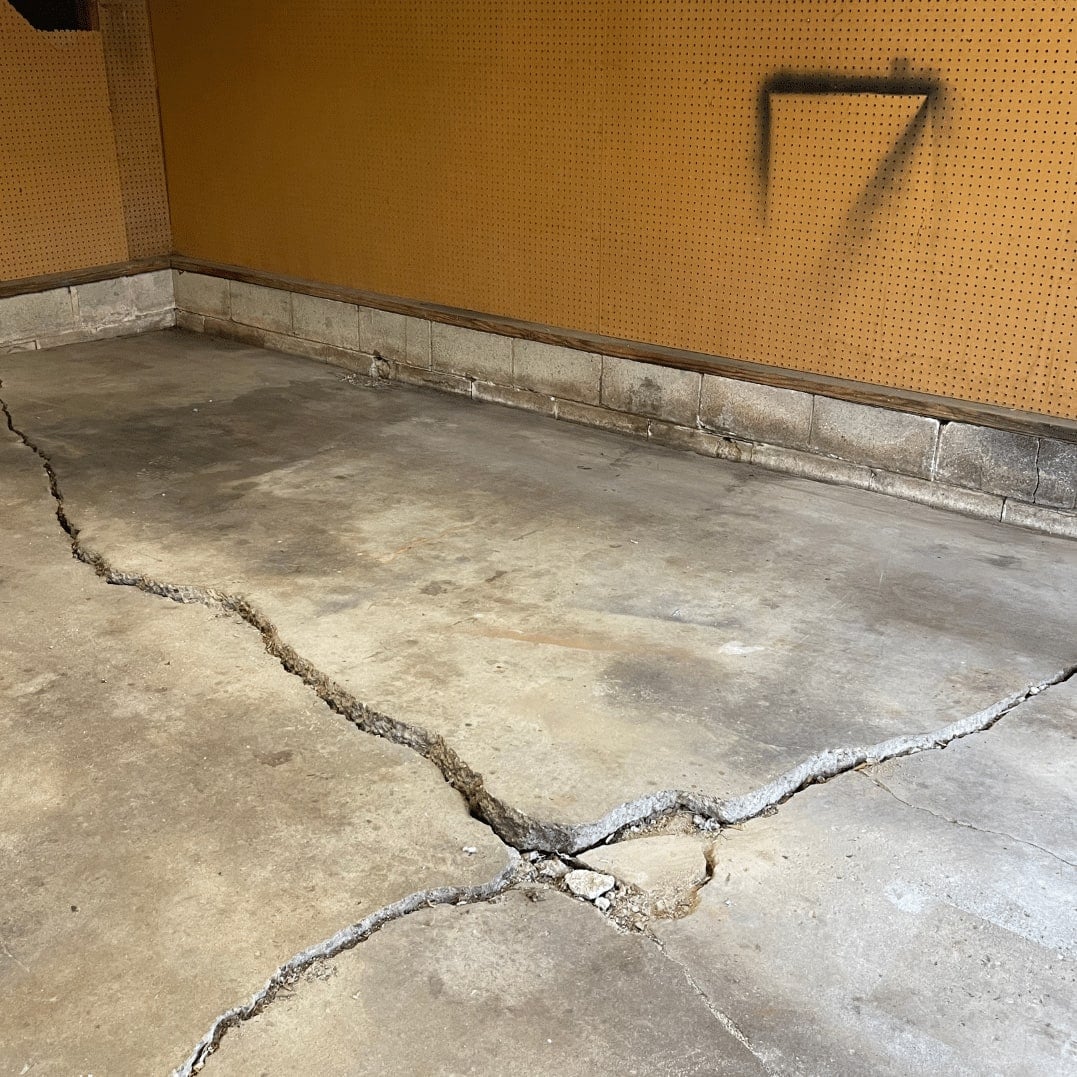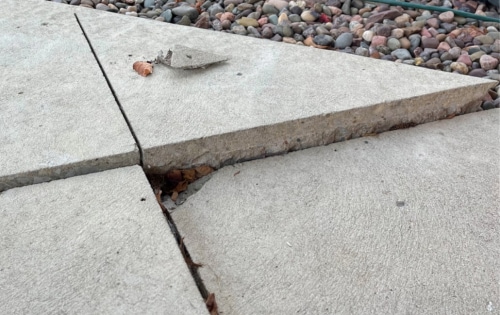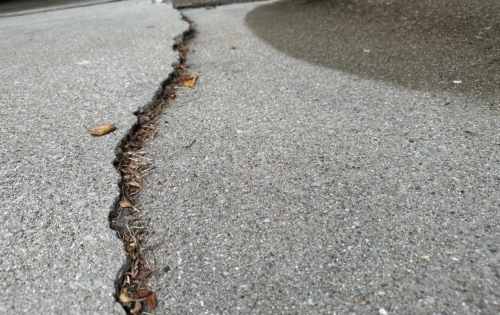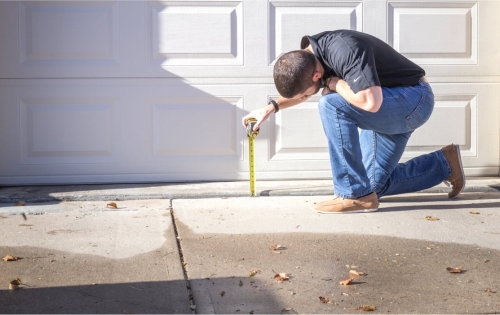LevelUp Concrete Solutions, a trusted concrete restoration company serving Indiana, is dedicated to providing insights into common concrete issues. Damaged concrete floors are not just ugly but can also be dangerous and weaken the structure and foundation of your home or business. Let’s explore the primary causes of sunken or cracked concrete floors and how our team can address these issues.
Identifying the root cause of sunken or cracked concrete is essential to ensure repairs are effective and prevent future problems.
Introduction to Concrete Issues
Concrete is renowned for its strength and versatility, making it a popular choice for driveways, garage floors, patios, and walkways. However, even the most robust concrete surfaces can experience problems over time, such as concrete sinking and settling. Concrete sinking, also known as settled concrete, happens when the soil beneath a concrete slab compacts, erodes, or shifts, causing the slab to sink or settle unevenly. This process can result in uneven surfaces, visible cracks, and dangerous tripping hazards that put both property owners and visitors at risk.
Understanding why concrete sinks or settles is crucial for preventing further damage and ensuring the long-term stability of your concrete slab. Regular inspections and proactive maintenance can help spot early warning signs of sinking or cracking, allowing you to address issues before they escalate into costly repairs. By staying vigilant and informed about the causes of concrete sinking, you can take the right steps toward fixing and maintaining safe, level concrete surfaces around your property.
Soil Erosion
One of the leading causes of sunken concrete is soil erosion beneath the concrete slab. Erosion happens when soil settles, water infiltrates, or drainage is bad, causing the ground to shift or settle and compromise the stability of the concrete surface.
*A traditional slab of concrete (9×10) weighs 4,000 lbs, that’s a lot of weight!
This video helps explain the causes of sunken concrete:
-
Poor Installation: Improper installation practices during the initial pouring of the concrete can result in sunken or cracked surfaces. Problems such as inadequate soil compaction, insufficient reinforcement, or improper curing can weaken the concrete slab. Poor soil compaction and loose soil are common issues during initial construction and the construction process, leading to instability and future settlement. This weakening can lead to sinking or cracking of the slab over time.
-
Heavy Loads: Excessive weight or pressure placed on the concrete floor can cause it to crack or sink. In industrial or commercial settings, people frequently use heavy machinery, equipment, or vehicles, which makes this particularly common. Did you know: 20% of unplanned downtown is preventable with leveling concrete surfaces? Overloading the concrete beyond its designed capacity can lead to stress fractures or gradual sinking in specific areas.
-
Freeze-thaw: In Indiana, freezing temperatures can harm concrete floors because of freeze-thaw cycles during winter. Water freezing in concrete cracks causes pressure, leading to cracking and deterioration over time.
-
Tree roots growing under or next to concrete can exert strong pressure, causing cracks or lifting the floor. When roots expand, they can break concrete by pushing against it. This happens because the roots need water and nutrients from the soil. Insufficient drainage around your concrete floor can cause water to accumulate or pool underneath. This is especially true during heavy rainstorms that overwhelm your drains and wash away your mulch. Moisture in the soil weakens your concrete floor. This can cause settlement or erosion under the concrete. As a result, the floor may sink or crack.
External factors such as weather, drainage, and soil type also play a significant role. Properly compacted soil is essential for stability; poor soil compaction or loose soil from the initial construction or construction process can lead to instability and settlement. Effective drainage is crucial—water drains, downspouts, and gutters are essential components for managing water flows and preventing pooling water around concrete surfaces. Areas that stay wet due to poor drainage or plumbing leaks can cause the soil to weaken, leading to sinking and cracks. Improper water flows can erode the ground and affect the stability of the concrete surface, making regular maintenance and inspection of drainage systems vital for protecting your concrete.
External Factors Affecting Concrete
The integrity of your concrete surfaces is influenced by a variety of external factors, many of which are beyond your immediate control. Weather conditions, soil type, and drainage all play a crucial role in the health of your concrete slab. For example, heavy water runoff and poor drainage can lead to soil washout beneath the slab, causing the concrete to sink or erode over time. When water consistently flows or pools around your concrete, it can wash away the soil underneath, leaving voids that result in sinking concrete.
Tree roots and other vegetation can also impact your concrete surfaces, especially when they grow beneath the slab and disrupt the soil structure. Additionally, the natural settling and compaction of soil can occur gradually, but these processes are often made worse by inadequate soil preparation or poor construction practices during the initial installation. Identifying and addressing these external factors is essential for preventing and fixing concrete sinking, ensuring your concrete remains stable and safe for years to come. By understanding how these elements affect your concrete, you can take proactive measures to protect your investment and prevent future issues.
How We Can Help:
Our team at LevelUp specializes in fixing sinking concrete and restoring concrete slabs to their proper position for residential and commercial businesses. We use advanced techniques and best-in-class products from our partner supplier SupportWorks.
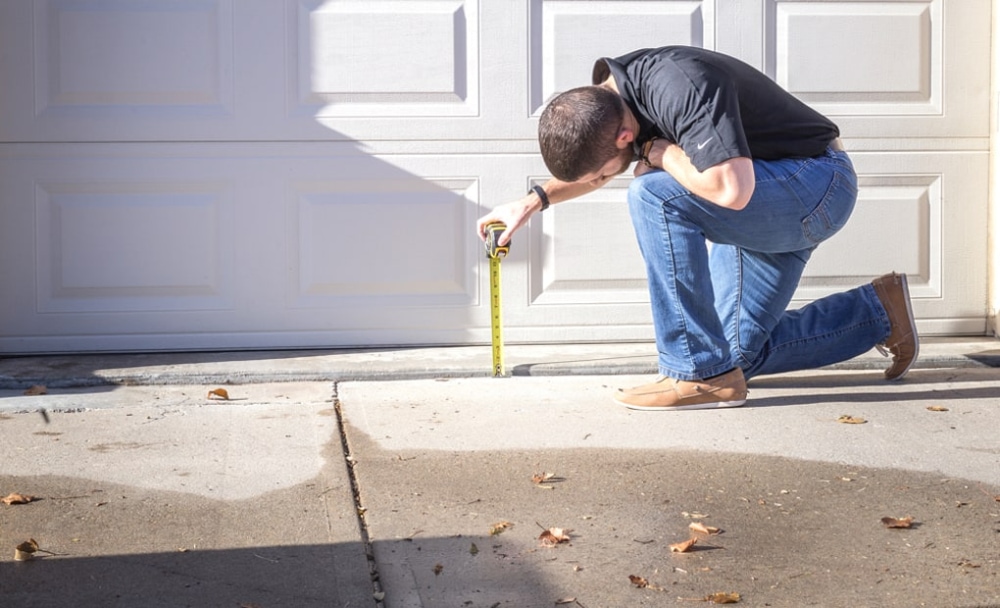
Our design technicians have extensive experience in identifying the causes of concrete problems, such as concrete settlement, gaps between concrete slabs or adjacent structures, and uneven concrete. They offer personalized solutions to address both the structural and aesthetic issues with your concrete. We prioritize long term, warrantied repairs to address concrete settlement and prevent future issues. Our solutions include concrete replacement for severely damaged areas, installing new concrete, concrete grinding to remove rough patches, filling voids under concrete slabs, sealing concrete, reinforcing soil, and repairing cracks. Techniques like drilling holes are used for slabjacking or leveling uneven concrete. We customize each solution to meet the specific needs of your driveway, concrete driveway, or sinking driveway, always considering cost and determining the best course of action for your situation.
Knowing why concrete floors sink or crack is important for repairing and restoring them properly. Please find a specialist who will accurately identify the issue and offer a solution that suits your requirements. Our team in Indiana is here to help residents and businesses with their needs. We customize expert solutions to ensure long-lasting durability and safety.
Contact us for a free onsite cost estimate to fix sinking concrete and protect visitors and property. These issues can affect both the functionality and appearance of your space.
